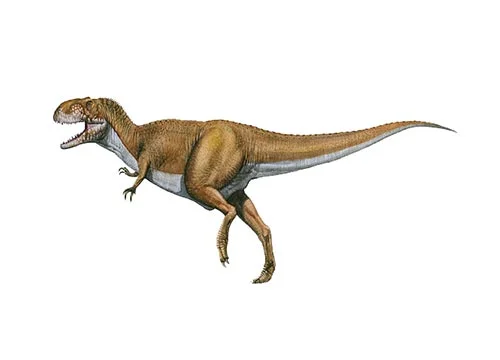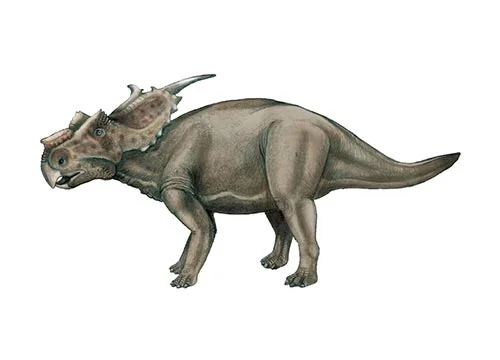Udanoceratops (Udan-Sayr horned face)

U-dan-oh-seh-rah-tops
Sergei Kurzanov - 1992
Herbivore
Estimated 2.5 meters long
Ceratopsian
U. tschizhovi (type)
Mongolia, Omnogovi Province - Djadokhta Formation, Dornogovi Province - Barun Goyot Formation
Late Cretaceous, 90 million years ago
Udanoceratops Facts
Udanoceratops is a genus of ceratopsian dinosaur that lived during the Late Cretaceous period, approximately 90 million years ago, in what is now Mongolia. Its name is derived from the Udan Sayr region of Mongolia, where it was discovered, and the Greek word “ceratops,” which means “horned face.”
Udanoceratops is known from a single, well-preserved skull, which has provided important insights into the evolutionary history of ceratopsians. It was a relatively small dinosaur, estimated to have been around 2.5 meters (8 feet) long and weighing around 200 kilograms (440 pounds).
One of the most distinctive features of Udanoceratops is its frill, which is relatively short and broad, with large, triangular epoccipitals that project outward from the back of the frill. The frill is also ornamented with small, rounded knobs, which may have played a role in display or species recognition.
Another unique feature of Udanoceratops is its small, forward-curving horns, which are located above its eyes. Unlike other ceratopsians, which typically have large, elaborate horns, Udanoceratops has small, simple horns that are thought to have been used for display or intra-species combat.
Overall, Udanoceratops represents an important evolutionary link between early, primitive ceratopsians and the more derived, heavily-armored ceratopsians that are known from later in the Late Cretaceous. Its discovery has shed light on the diversification of ceratopsians during this period, and the various strategies that these dinosaurs used to compete and survive in their environments.



